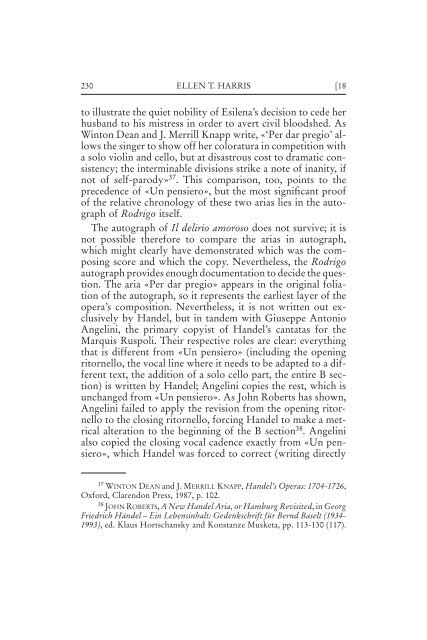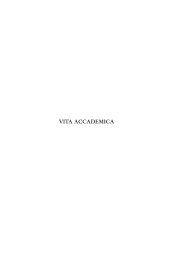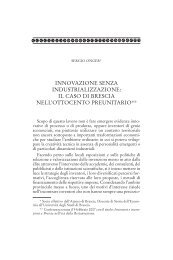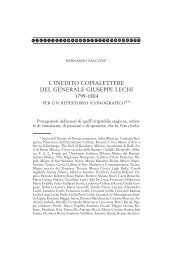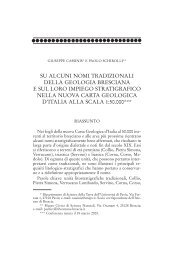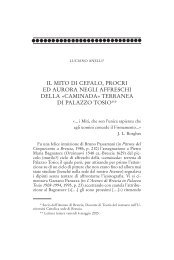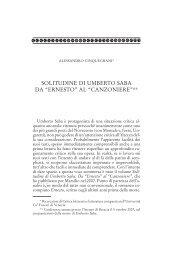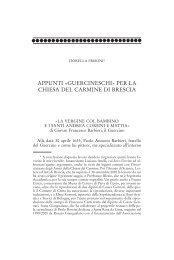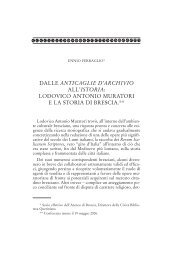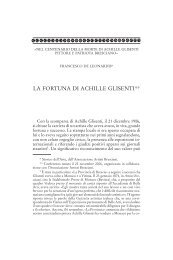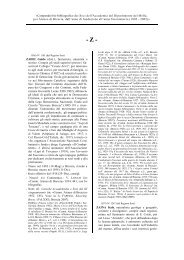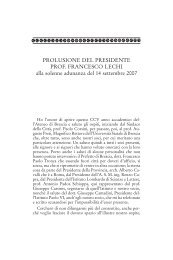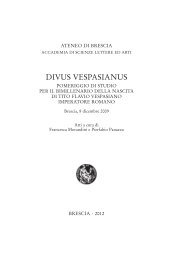do handel's cantatas matter? - BOLbusiness
do handel's cantatas matter? - BOLbusiness
do handel's cantatas matter? - BOLbusiness
You also want an ePaper? Increase the reach of your titles
YUMPU automatically turns print PDFs into web optimized ePapers that Google loves.
230 ELLEN T. HARRIS<br />
[18<br />
to illustrate the quiet nobility of Esilena’s decision to cede her<br />
husband to his mistress in order to avert civil bloodshed. As<br />
Winton Dean and J. Merrill Knapp write, «‘Per dar pregio’ allows<br />
the singer to show off her coloratura in competition with<br />
a solo violin and cello, but at disastrous cost to dramatic consistency;<br />
the interminable divisions strike a note of inanity, if<br />
not of self-parody» 37 . This comparison, too, points to the<br />
precedence of «Un pensiero», but the most significant proof<br />
of the relative chronology of these two arias lies in the autograph<br />
of Rodrigo itself.<br />
The autograph of Il delirio amoroso <strong>do</strong>es not survive; it is<br />
not possible therefore to compare the arias in autograph,<br />
which might clearly have demonstrated which was the composing<br />
score and which the copy. Nevertheless, the Rodrigo<br />
autograph provides enough <strong>do</strong>cumentation to decide the question.<br />
The aria «Per dar pregio» appears in the original foliation<br />
of the autograph, so it represents the earliest layer of the<br />
opera’s composition. Nevertheless, it is not written out exclusively<br />
by Handel, but in tandem with Giuseppe Antonio<br />
Angelini, the primary copyist of Handel’s <strong>cantatas</strong> for the<br />
Marquis Ruspoli. Their respective roles are clear: everything<br />
that is different from «Un pensiero» (including the opening<br />
ritornello, the vocal line where it needs to be adapted to a different<br />
text, the addition of a solo cello part, the entire B section)<br />
is written by Handel; Angelini copies the rest, which is<br />
unchanged from «Un pensiero». As John Roberts has shown,<br />
Angelini failed to apply the revision from the opening ritornello<br />
to the closing ritornello, forcing Handel to make a metrical<br />
alteration to the beginning of the B section 38 . Angelini<br />
also copied the closing vocal cadence exactly from «Un pensiero»,<br />
which Handel was forced to correct (writing directly<br />
37 WINTON DEAN and J. MERRILL KNAPP, Handel’s Operas: 1704-1726,<br />
Oxford, Claren<strong>do</strong>n Press, 1987, p. 102.<br />
38 JOHN ROBERTS, A New Handel Aria, or Hamburg Revisited, in Georg<br />
Friedrich Händel – Ein Lebensinhalt: Gedenkschrift für Bernd Baselt (1934-<br />
1993), ed. Klaus Hortschansky and Konstanze Musketa, pp. 113-130 (117).


